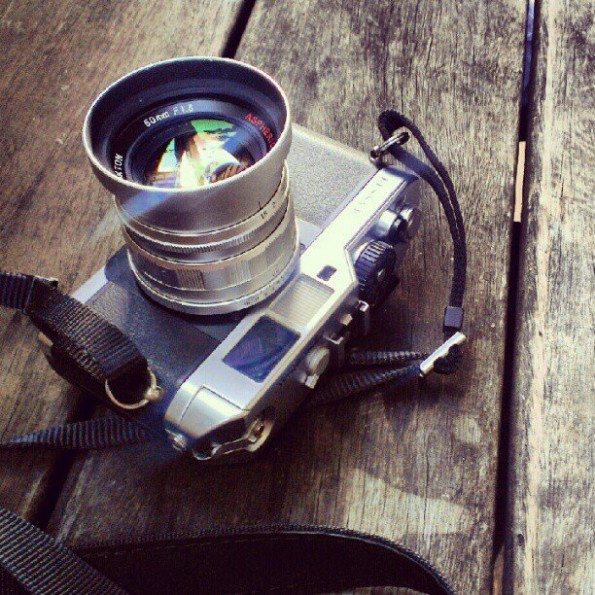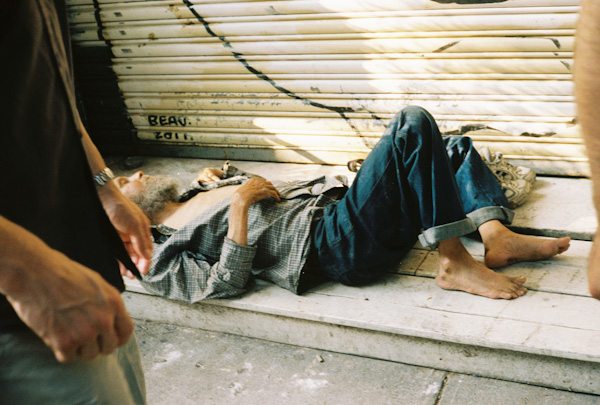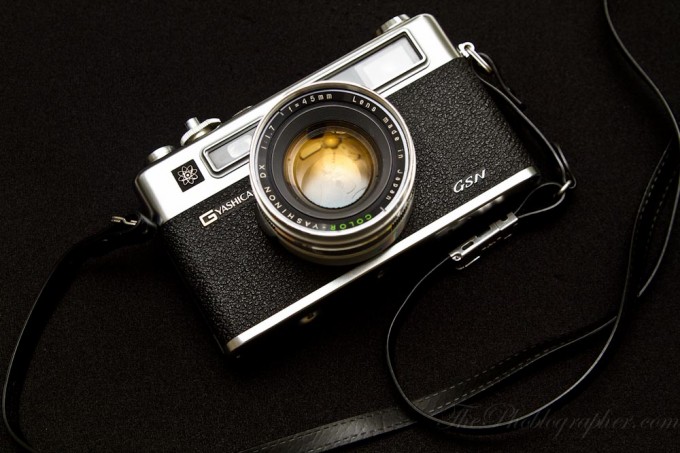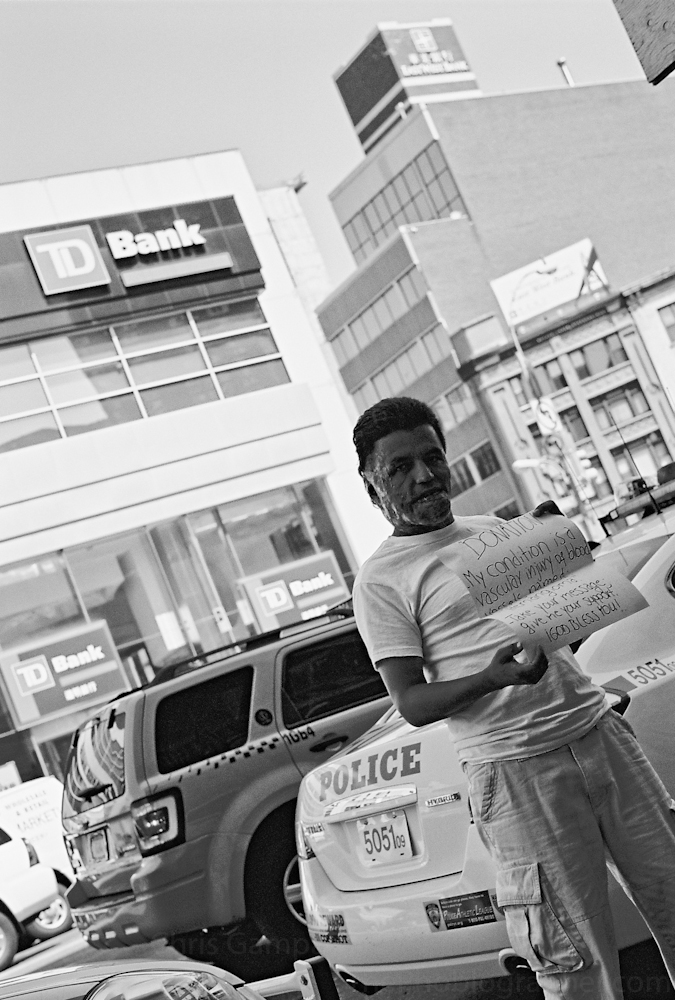The Phoblographer’s Guide to Affordable Film Rangefinder Cameras
Check them out: forum after forum will be plagued by people asking for affordable rangefinder cameras. Indeed, these cameras have always been surrounded in a certain mystique and many are curious about and yearn for the simplicity that comes with shooting one. Personally, I trained myself on a Leica CL; and the skills and style I developed during that period have stuck with me even into my DSLR shooting and now mirrorless shooting styles. In fact, they’ve even become apparent in my use of strobes.
In the end, once you train yourself or learn how to use a rangefinder, you’ll develop a special courage and learn new skills that will teach you to only become a better photographer. If you don’t want to break the bank while doing so, here are a list of affordable rangefinders to keep your eyes out for.
Fixed Lens
Yashica GSN Electro 35- This is the rangefinder camera that I’ve been using for almost a year now since the publication date of this article, and it will forever be one of my favorites. It is affordable, sharp, has an excellent meter, and built like a tank. Mine was pretty much virgin when I got it until it took a tumble off of my roommate’s bed. Even then, only the filter ring was dented in a bit.
The Yashica is a wonderful rangefinder with its aperture control priority mode and a very clear and easy to read meter in the viewfinder and on top of the camera. If you want to shoot with a flash attached (and I’d recommend the Vivitar 285HV in that case) then you can switch a ring around the lens (45mm f1.7) to shoot only in flash mode. Then the camera will fire at a fixed 1/30th of a second and you can adjust the aperture all yourself.
To boot, the ISO range on this camera is incredibly vast; it’s a camera that I recommend to everyone perhaps above most on this list. For even more, you can check out our review on the camera here.
As far as rangefinder cameras go, these are amongst the most affordable on eBay ranging anywhere from $30-$120 depending on condition.
Canonet QL17- This camera is perhaps one of the best and most popular out there. They come at a bit more of a premium than the Yashica, but they overall produce better images. With a 40mm f1.7 lens, you won’t be shooting in the darkest of situations with this camera due to the fact that its ISO range only goes up to 800 at the highest. If you’re using black and white film, you can surely go ahead and push it in the darkroom though.
The best thing to do for this camera though is to use a hand-held meter, unless you like shooting in shutter priority and keeping your lens wide open all the time (which is how many rangefinder shooters choose to operate unless using the Sunny 16 rule for street photography.)
Fixing the meter on this camera can be tough though, and even trying to find a certified and skilled repairman in NYC can be a nightmare.
Editor’s Note: Though the Contax T, Olympus XA and Olympus 35RC originally made this list, I decided in the end that the lenses are too slow for this list.
Hexar AF- This camera can go for a lot of money but usually stays under the $800 range. This camera is the only autofocus rangefinder on the list. It has a 35mm f2 lens that is said to be a copy of a Leica 35mm F2 Summicron. Additionally, there is full manual metering if you’d like and it also features one of the quietest shutters on this list for incognito stealth operations. Plus, there is Program or Aperture priority also built in.
In essence, think of what the Fujifilm X100 was back in the film days and you’ve got this camera.
Though I currently can’t justify this camera to myself due to what’s next on the list, it is still one of the sweetest around and at times even tempts me greatly.
Screwmount
Voigtlander Bessa R- This is a recent purchase of mine. The camera comes available in both silver and black and though old, is still in the hands of many street photographers. This camera uses screwmount M39 lenses that can be a bit tougher to get your hands on. However, they’re beautiful. I own the Voigtlander 50mm f1.5. Zeiss, Voigtlander, Leica and Canon created some very interesting offerings for the system.
The camera is a full manual control rangefinder with a viewfinder so bright it rivals that of many Leicas, and a metering system that is simple to work with.
For the absolute best results, shoot with the Sunny 16 rule in mind. To that end, fix the shutter speed or aperture to a certain setting and then modify the other variable to the available lighting.
They’re available on eBay for very good prices. But I got mine from a good friend for a sweet deal.
Canon 7- As another screwmount M39 camera on this list, the Canon 7 is quite legendary not only for its excellent viewfinder and controls, but also because it was designed with an emphasis on speedy controls. Combine this with the fact that is often more affordable than the Voigtlander up above, and you’ve got yourself a real winner.
But what’s most fascinating is the fact that it is often seen with one of the most impressive lenses ever made: theCanon 50mm f0.95.
Admittedly, this is the camera that made up our old logo, and every time I saw it I missed shooting with the Canon 7.
M Mount
Leica M2/M3- These two cameras used to be (and some may argue today that they still are) the Leicas that everyone trains themselves on before they fully commit to the system. The M2 and M3 are built like tanks, and to be honest I believe that the M2 has some of the finest ergonomics I’ve ever felt. It is so extremely simple to use, has a bright viewfinder, and feels great in the hand. The film advance also feels so great in the hand.
Keep in mind that these cameras don’t have a built in meter, so you’ll need to learn manual metering or grab a light-meter.
Best of all, these two cameras are also usually quite affordable and can be repaired with ease.
Hexar RF- When this camera came out, it was the one that many photographers reached for off of store shelves. It did pretty much everything that a Leica could, was well built, and was often more affordable. Today, they can be found at a good price for the body only. Once the lenses come into the equation though, it becomes a different story. Additionally, it has more features than most Leicas like a shutter speed going to 1/4000th, AE, and more elaborate controls.
Leica CL- As stated earlier on, I was trained on this camera. It is smaller than most M Mount cameras but won’t take all M lenses due to its design. Because of this, it is often better to find the right lenses that you’ll need like the 40mm that often came with it.
Keep in mind that it has a bit of a weird design with the shutter wheel being on the front of the camera. However, also note that it can be easily repaired as opposed to its counterpart, the Minolta CL-E. The CL can also be found for around $300 without a lens.





No comments:
Post a Comment
Note: Only a member of this blog may post a comment.